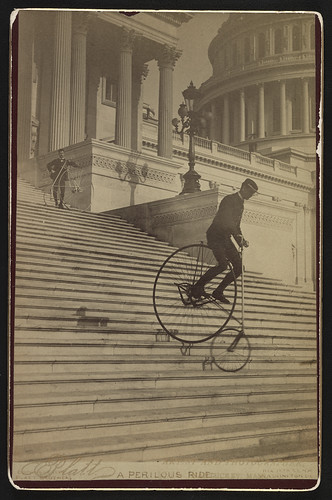There is this, with a quote from Council member Libby Garvey: Garvey warned that local government should not “overstep our role and risk stifling innovation,” particularly in regulations such as the sign ordinance, which took more than a year to revise. “Part of the charm of Arlington,” she said, “. . . is how not standard everything is.”
I am not sure what "sign ordinance" is being referred to, but I don't much care for non-standard, inconsistent application of signage to traffic control affecting cyclists - but I don't have to go far to find some, given a recent change to the trail near my house.
Down the street from my house on South Dinwiddie Street, there is a trail that is an offshoot of the WO&D trail, that is parallel to the Lucky Run (stream).

The trail is shown in the image above, with the red line. Somewhat unusual I would say, there is a standard sidewalk and crosswalk at the intersection, then 40 or so feet back on S Dinwiddie, there is the crossing for the trail. It is not painted as a crosswalk with zebra stripes, but there are some dashed lines to show it is there to drivers. There are yellow yield signs controlling pedestrians and cyclists on the trail who would cross S Dinwiddie St.
Meanwhile, just a quarter mile away, the trail crosses S Wakefield St in a similar way but the traffic control is completely different.

These stop sign appeared about a month ago - previously there was not signage here controlling pedestrians and cyclists on the trail where it crosses S Wakefield St. (Yes, the stop sign are not full size, but sort of toy size for some reason.) And the crosswalk is painted with full zebra stripes.

Here you can see the situation, much like at S Dinwiddie St, with the trail crossing set about 40 feet back of the crosswalk that is the intersection.
I don't understand how it is that Arlington County thinks these intersections are supposed to work successfully. In general, if a motorist sees me in the "not quite a crosswalk" for the trail crossing, they stop - but I can't count on it. And apparently at one of the intersections (Dinwiddie) I am merely to yield, but the other (with full zebra stripes!) requires a full stop! WTF, to use the vernacular (or vulgar - whichever).
Consistency in these matters could be a good thing, even in quaint Arlington County. This is a real safety issue, after all.








